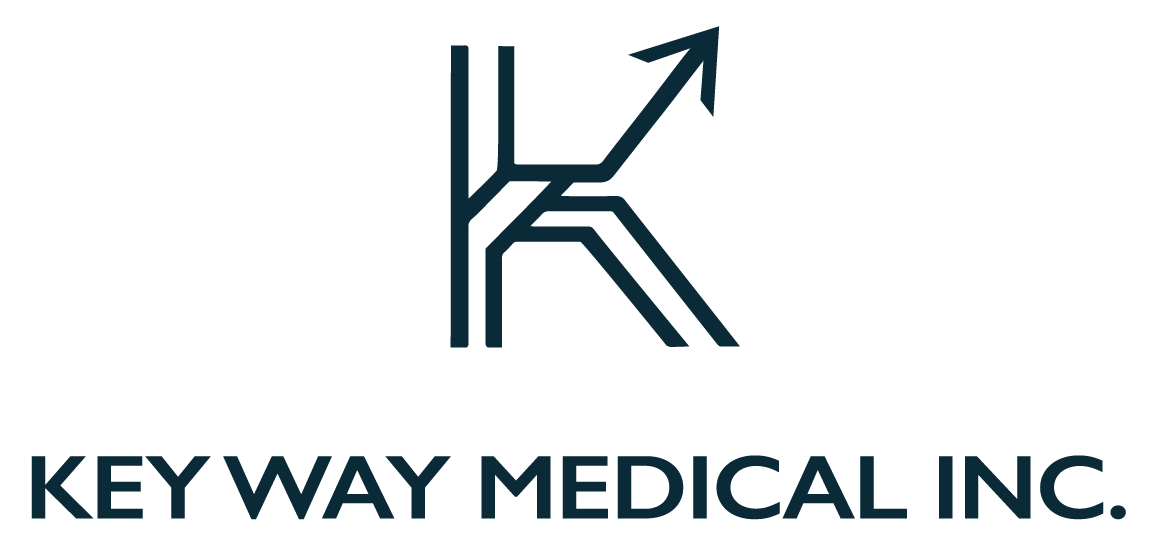
Supporting Stroke Recovery: The Role of Assistive Devices in Rehabilitation
A stroke can be a life-altering event, impacting mobility, speech, cognition, and daily activities. Stroke rehabilitation plays a crucial role in helping survivors regain independence and improve their quality of life. Among the many strategies used in stroke recovery, assistive devices are essential tools that facilitate movement, communication, and self-care. These devices empower stroke survivors to regain lost functions, improve their mobility, and enhance their overall well-being. Additionally, they provide emotional reassurance by enabling individuals to perform everyday tasks with greater ease, reducing frustration and dependence on caregivers. With ongoing advancements in technology, modern assistive devices continue to evolve, offering innovative solutions that further enhance rehabilitation outcomes. From simple adaptive tools to high-tech robotic systems, these devices play a fundamental role in helping stroke survivors achieve a higher level of independence and confidence in their recovery journey.
Understanding Stroke Rehabilitation
Stroke rehabilitation is a structured, multidisciplinary process aimed at helping individuals recover lost functions and adapt to new physical or cognitive limitations. The severity and effects of a stroke vary from person to person, making personalized rehabilitation plans essential. A comprehensive rehabilitation approach typically includes physical therapy, occupational therapy, speech therapy, and psychological support. In many cases, a team of healthcare professionals, including neurologists, rehabilitation specialists, and therapists, work collaboratively to create a tailored recovery plan that addresses the specific challenges faced by each stroke survivor.
Rehabilitation is most effective when started as early as possible, as the brain has a remarkable ability to rewire and adapt through neuroplasticity. Intensive, repetitive therapy sessions help strengthen neural connections, allowing stroke survivors to regain control over affected areas. However, the rehabilitation process can be long and demanding, requiring persistence and access to the right resources.
Assistive devices complement these therapies by providing additional support to help stroke survivors perform daily tasks, regain independence, and navigate their environments more easily. By integrating assistive technology into rehabilitation programs, individuals can maximize their functional recovery, improve mobility, and reduce the risk of secondary complications such as muscle atrophy and joint stiffness. Furthermore, these devices offer psychological benefits, helping to boost confidence and motivation by enabling users to participate more actively in their recovery journey and daily lives.
Types of Assistive Devices for Stroke Recovery
Assistive technology for stroke rehabilitation includes a wide range of tools designed to address different challenges. These devices can be classified into several categories based on their function:
1. Mobility Aids
Mobility is often one of the most affected areas following a stroke. Many survivors experience weakness or paralysis on one side of the body, making walking and standing difficult. The inability to move freely can significantly impact an individual’s independence, emotional well-being, and overall quality of life. For some, even simple tasks such as standing up from a chair or taking a few steps can be daunting. Without proper support, stroke survivors may face an increased risk of falls, which can lead to further injuries and complications.
Fortunately, various assistive devices are available to aid mobility, providing stability, support, and confidence for those recovering from a stroke. These devices not only help users move safely but also encourage muscle activation and rehabilitation, ultimately improving strength and coordination over time. Some of the most commonly used mobility aids include:
- Canes and Walkers: Provide stability and support for those with impaired balance.
- Wheelchairs: Help individuals who have significant mobility challenges move around more easily.
- Ankle-Foot Orthoses (AFOs): Support foot and ankle alignment to prevent foot drop, a common post-stroke condition.
- Gait Trainers and Exoskeletons: Advanced robotic-assisted devices that help retrain walking patterns.
Key Way Medical offers innovative mobility solutions designed to enhance stability and independence for stroke survivors. Our cutting-edge assistive devices provide comfort and support, ensuring users regain confidence in their movements.
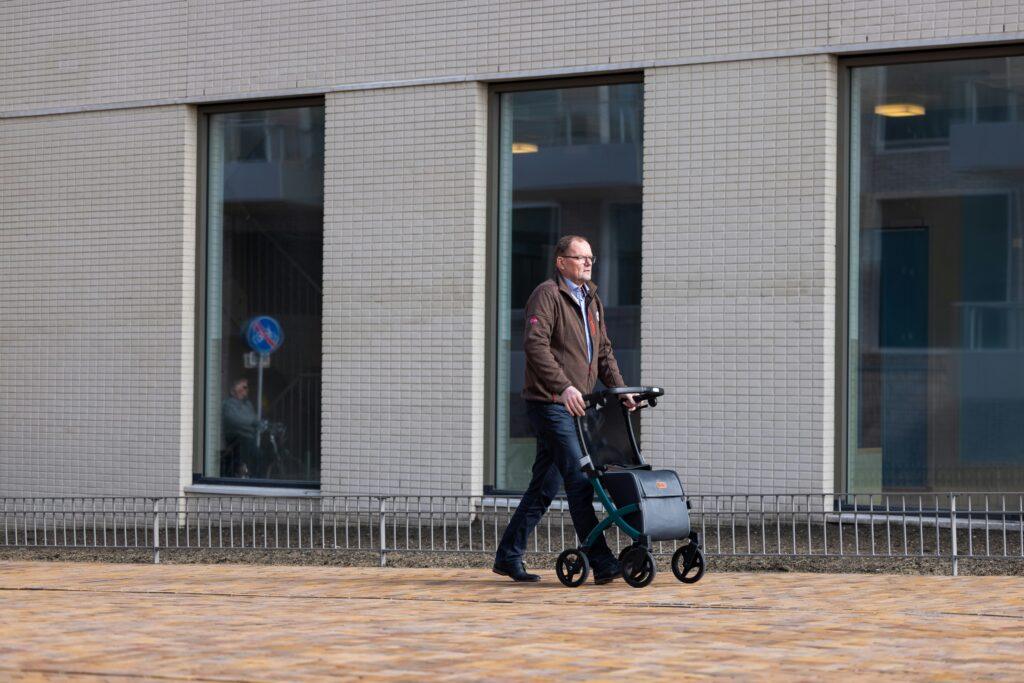
2. Hand and Arm Assistive Devices
Regaining fine motor skills and arm function is a primary focus of stroke rehabilitation. Many stroke survivors experience weakness, stiffness, or loss of coordination in their arms and hands, making it challenging to perform everyday activities such as eating, dressing, or writing. Various assistive tools help individuals strengthen and improve arm and hand movements, facilitating greater independence. These devices include:
- Hand Therapy Balls and Resistance Bands: Help improve grip strength and dexterity through repetitive exercises.
- Adaptive Utensils and Tools: Specially designed eating utensils, writing aids, and grooming tools that enhance ease of use.
- Rehabilitation Gloves and Braces: Support weakened muscles and encourage proper hand positioning during movement.
- Electrical Stimulation Devices: Use mild electrical currents to stimulate muscle contraction and enhance motor recovery.
- Robotic Hand and Arm Assist Devices: Advanced technology that assists in repetitive motion exercises to retrain the brain and muscles for improved function.
These assistive devices play a crucial role in enabling stroke survivors to regain the use of their hands and arms, ultimately enhancing their ability to complete daily activities with greater ease and confidence.
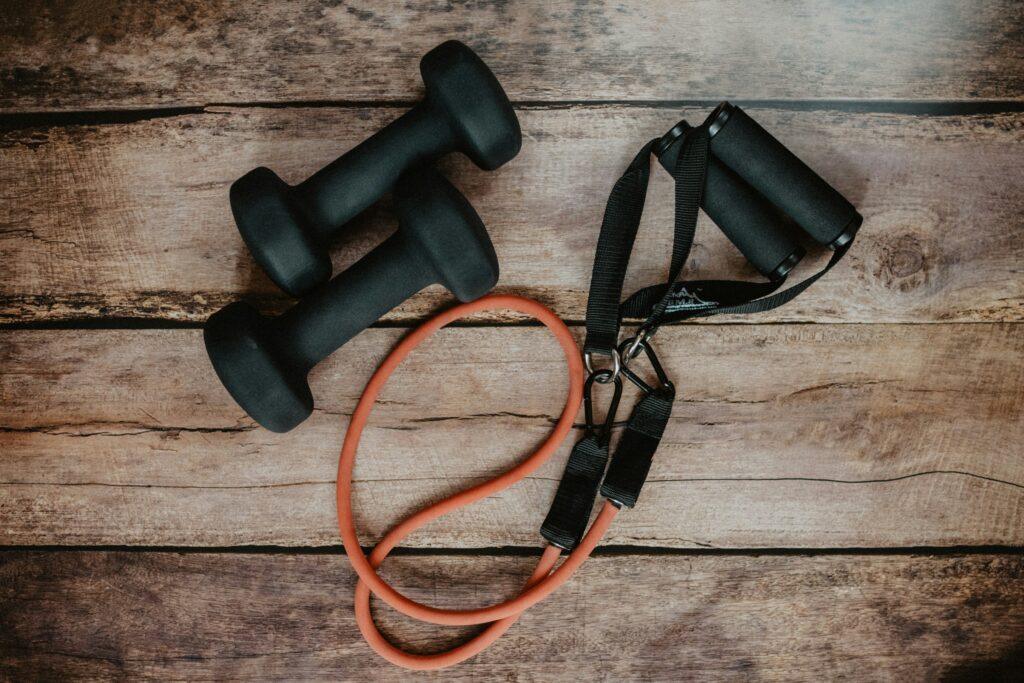
3. Communication Aids
A stroke can significantly impact speech and language abilities, making it difficult for survivors to express themselves, understand others, or process language. This condition, known as aphasia, can range. A stroke can significantly impact speech and language abilities, making it difficult for survivors to express themselves, understand others, or process language. This condition, known as aphasia, can range from mild difficulty in finding words to complete loss of speech. Additionally, some individuals may struggle with dysarthria, a condition that affects muscle control in speech production, leading to slurred or slow speech. Communication difficulties can be frustrating and isolating, but assistive devices provide valuable support in bridging the gap and restoring interaction with others.
Various communication aids are designed to help stroke survivors regain their ability to express themselves and engage in meaningful conversations, improving their social connections and overall quality of life. These include:
- Speech-Generating Devices (SGDs): Also known as augmentative and alternative communication (AAC) devices, SGDs help individuals who struggle with verbal communication by converting text or pre-set phrases into spoken words. Some SGDs are portable touchscreen tablets, while others use eye-tracking technology for those with limited motor function.
- Text-to-Speech Apps: These apps allow users to type messages that are then spoken aloud, providing an easy and accessible way to communicate. Many modern text-to-speech programs come with predictive text, customizable voices, and multilingual support to accommodate different needs.
- Picture Communication Boards: Designed for individuals who have difficulty forming words, these boards display symbols, images, or words that users can point to in order to convey their needs and thoughts. They offer a low-tech yet highly effective solution for nonverbal communication.
- Voice Amplifiers: Useful for individuals with weak speech due to post-stroke muscle weakness, these devices enhance vocal volume and clarity, making it easier for others to understand them.
- Eye-Tracking and Gesture-Based Communication Devices: For stroke survivors with severe mobility impairments, advanced eye-tracking technology and gesture-recognition devices enable communication through subtle eye movements or hand gestures.
By integrating these assistive tools into stroke rehabilitation, individuals can regain their ability to connect with family, friends, and caregivers, reducing frustration and enhancing their confidence in social interactions.
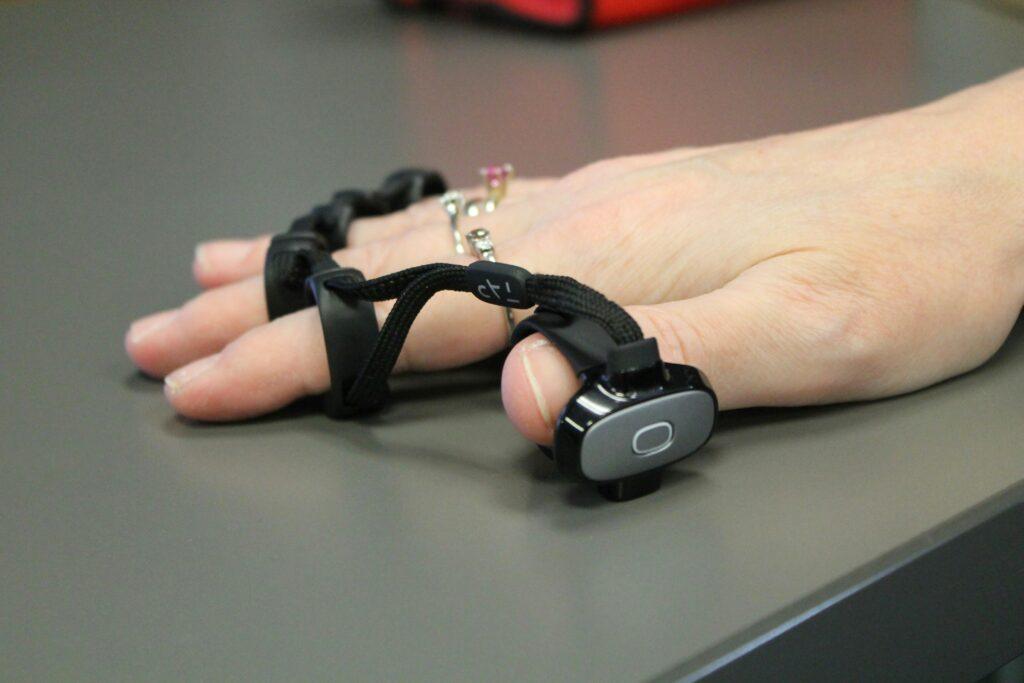
4. Daily Living Aids
Performing everyday activities such as dressing, eating, and bathing can be challenging for stroke survivors, especially for those with limited mobility, weakness on one side of the body, or impaired coordination. The inability to complete routine tasks independently can lead to frustration, loss of confidence, and increased reliance on caregivers. Fortunately, adaptive equipment and assistive devices are designed to enhance self-sufficiency and restore a sense of normalcy in daily life.
These tools are specifically engineered to help stroke survivors regain control over their daily routines:
- One-Handed Utensils and Adaptive Cutlery: Designed with ergonomic handles and built-in stabilizers, these utensils allow individuals with limited hand function to eat independently. Some utensils feature non-slip grips, while others are weighted to reduce tremors.
- Plate Guards and Non-Slip Placemats: Help prevent food from spilling off the plate and keep dishes in place for those with coordination difficulties.
- Button Hooks and Zipper Pulls: Make dressing easier by allowing individuals with reduced dexterity to fasten clothes with one hand, promoting independence in getting ready for the day.
- Velcro or Magnetic Fasteners: Offer an alternative to traditional buttons and zippers, simplifying the dressing process.
- Long-Handled Reachers and Dressing Sticks: Assist with grabbing objects, putting on socks, or adjusting clothing without excessive bending or stretching.
- Shower Chairs and Grab Bars: Provide stability and support in the bathroom, reducing the risk of slips and falls. Adjustable shower chairs allow individuals to bathe comfortably, while grab bars offer a secure handhold for extra safety.
- Sock Aids and Shoe Horns: Help individuals put on socks and shoes without excessive bending or straining, making dressing more manageable.
- Electric Jar Openers and Adaptive Kitchen Tools: Enable stroke survivors to prepare meals independently, reducing the difficulty of opening containers, cutting food, or cooking with limited hand strength.
Key Way Medical is committed to designing innovative assistive devices that simplify daily living for stroke survivors. Our carefully crafted products ensure that individuals can perform routine activities with greater ease and independence, enhancing their quality of life. By incorporating these adaptive tools into stroke rehabilitation, survivors can regain confidence in their abilities and reduce their dependence on caregivers.

The Impact of Assistive Devices on Stroke Recovery
Assistive devices play a crucial role in stroke rehabilitation, offering physical, emotional, and psychological benefits that significantly enhance a survivor’s quality of life. Beyond simply aiding mobility and daily tasks, these tools foster independence, boost confidence, and contribute to long-term recovery. Stroke survivors often face challenges in adapting to new physical limitations, and assistive devices help bridge the gap between these challenges and regained functionality. By integrating the right technology and adaptive tools into rehabilitation, individuals can experience a smoother and more empowering recovery journey.
The key benefits of assistive devices in stroke recovery include:
- Improved Confidence and Self-Esteem: The ability to move independently, communicate effectively, and complete daily tasks fosters a sense of control and personal achievement. Stroke survivors who use assistive devices often feel more capable, reducing frustration and emotional distress associated with dependence on others.
- Greater Independence in Daily Life: Many assistive devices allow individuals to perform essential tasks—such as walking, eating, dressing, and communicating—without relying heavily on caregivers. This level of autonomy helps stroke survivors regain dignity and a sense of normalcy in their lives.
- Enhanced Rehabilitation Outcomes: Innovative technologies, such as robotic exoskeletons, functional electrical stimulation (FES) devices, and smart rehabilitation tools, actively engage users in therapy. These devices promote neural recovery by encouraging repetitive movements, improving motor function, and strengthening affected muscles.
- Reduced Risk of Secondary Complications: Prolonged immobility after a stroke can lead to complications such as muscle atrophy, joint stiffness, pressure sores, and poor circulation. Properly chosen mobility aids help individuals remain active, preventing falls and injuries that could set back recovery progress.
- Increased Social Participation: Communication aids, mobility devices, and adaptive tools enable stroke survivors to engage more easily in social activities, improving mental well-being and reducing feelings of isolation. The ability to communicate effectively and move with confidence makes it easier to maintain relationships and participate in community life.
- Support for Long-Term Recovery: While early rehabilitation is crucial, stroke recovery can take months or even years. Assistive devices provide ongoing support beyond the initial rehabilitation phase, allowing survivors to continue improving their functional abilities over time.
- Reduced Caregiver Burden: By enabling stroke survivors to perform more tasks independently, assistive devices alleviate some of the physical and emotional strain on caregivers, fostering a more balanced and less stressful caregiving dynamic.
As assistive technology continues to evolve, companies like Key Way Medical are at the forefront of designing innovative rehabilitation tools that enhance mobility, support communication, and simplify daily living. By leveraging cutting-edge solutions, stroke survivors can achieve better rehabilitation outcomes, regain control over their lives, and experience an improved overall quality of life.
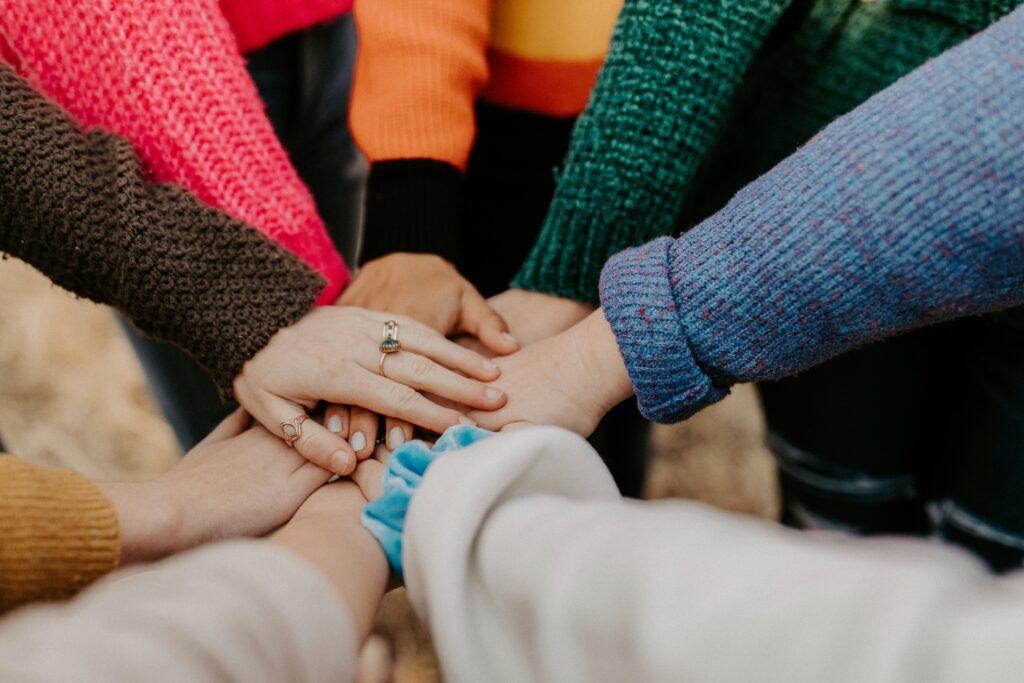
With rapid advancements in medical technology, stroke rehabilitation has seen remarkable innovations that enhance recovery outcomes, improve accessibility, and offer personalized solutions tailored to individual needs. These cutting-edge developments leverage neuroscience, artificial intelligence, and digital health to create more effective and engaging rehabilitation programs. By integrating modern technology into stroke recovery, survivors can regain lost functions faster, improve motor and cognitive abilities, and maintain long-term progress in their rehabilitation journey.
Some of the latest groundbreaking innovations in stroke rehabilitation include:
- Brain-Computer Interfaces (BCIs): These advanced systems enable stroke survivors to control assistive devices, robotic limbs, or even communication tools using brain signals. BCIs work by detecting neural activity and translating it into commands, helping individuals regain movement and interact with their environment despite severe motor impairments.
- Virtual Reality (VR) Therapy: VR-based rehabilitation immerses users in interactive, gamified exercises that improve motor coordination, balance, and cognitive function. This technology not only makes therapy more engaging but also allows therapists to customize rehabilitation programs based on individual progress. VR simulations can replicate real-world tasks, helping stroke survivors relearn essential skills in a controlled environment.
- Wearable Sensors and Smart Rehabilitation Devices: These devices provide real-time feedback on movement, posture, and muscle activation, allowing for precise monitoring of progress. Wearable technology helps individuals and therapists track improvements, adjust therapy routines, and ensure proper movement patterns to prevent compensatory behaviors that could hinder recovery.
- Functional Electrical Stimulation (FES): FES uses electrical impulses to activate weakened or paralyzed muscles, helping stroke survivors regain movement and prevent muscle atrophy. These devices can assist in walking, hand movement, and even speech therapy by stimulating the appropriate muscles in response to neural signals.
- Robotic Exoskeletons and Assisted Walking Devices: Robotics play a transformative role in stroke rehabilitation by enabling individuals with mobility impairments to stand, walk, and perform repetitive movements essential for neural recovery. These devices support weight-bearing activities, improve gait patterns, and help retrain the brain to restore movement in affected limbs.
- Artificial Intelligence (AI)-Powered Rehabilitation Platforms: AI-driven rehabilitation tools analyze movement patterns, track progress, and adapt therapy plans based on real-time data. These systems use machine learning to personalize treatment, ensuring that stroke survivors receive optimized exercises that align with their specific needs and recovery goals.
- Telemedicine and Remote Rehabilitation: The rise of digital health solutions allows stroke survivors to access therapy sessions from home. Tele-rehabilitation platforms connect patients with therapists via video calls, motion-tracking software, and interactive exercises, ensuring continuity of care even for those who may have difficulty attending in-person therapy sessions.
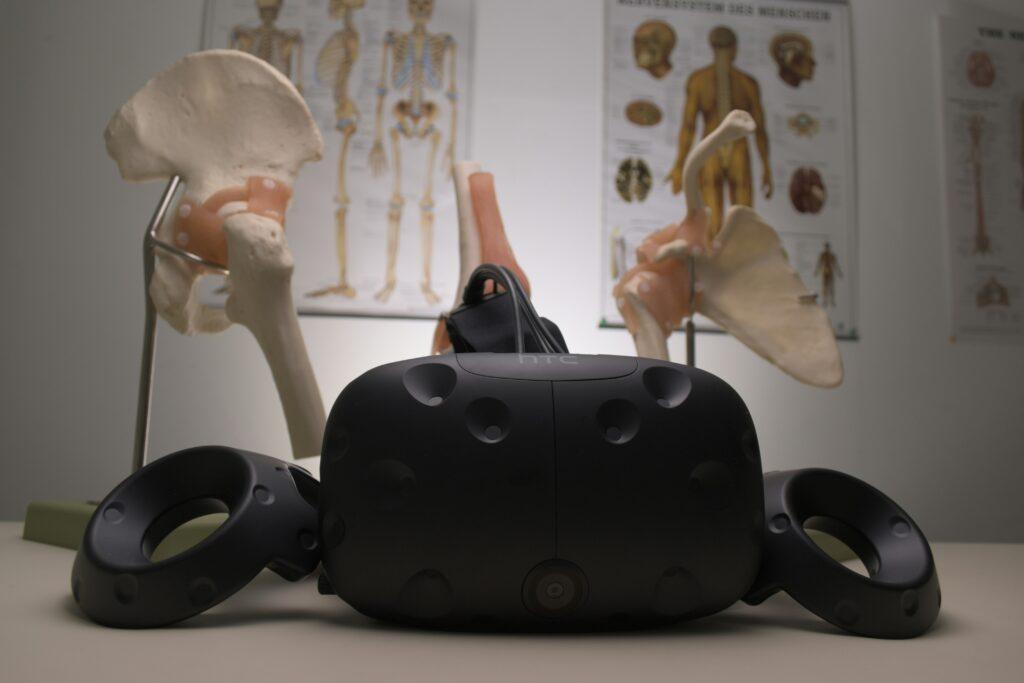
The Role of Key Way Medical in Advancing Stroke Rehabilitation
Key Way Medical is a leader in the field of rehabilitation and everyday accessibility products, playing a pivotal role in the development of groundbreaking solutions that are revolutionizing how recovery is approached. With an unwavering commitment to improving the lives of stroke survivors, Key Way Medical is at the forefront of innovation, continuously developing and refining state-of-the-art rehabilitation devices that integrate the latest advancements in technology. These devices are designed not only to support but to significantly enhance the rehabilitation process for individuals who have experienced a stroke.
The ultimate goal of Key Way Medical’s innovations is to provide stroke survivors with advanced solutions that significantly improve mobility, enhance independence, and speed up the rehabilitation process. These technologies are designed to be intuitive and adaptable to each patient’s unique needs, ensuring a customized approach to recovery that fosters greater success. With their groundbreaking tools, Key Way Medical not only aims to make the rehabilitation process more efficient but also strives to empower stroke survivors, helping them regain confidence, rebuild their lives, and move forward with greater ease and self-reliance. Their commitment to advancing stroke rehabilitation is ensuring that individuals recovering from strokes have access to the most advanced, scientifically validated tools available, making a profound difference in their recovery journey.

Choosing the Right Assistive Device
Selecting the appropriate assistive device for stroke rehabilitation is a highly individualized process, as it depends on several factors, including the person’s specific needs, the severity of the stroke, and the guidance of healthcare professionals. The choice of device can significantly impact the effectiveness of the rehabilitation process and ultimately the individual’s quality of life post-stroke. Therefore, it is essential to take a comprehensive approach that involves careful consideration of the person’s physical, emotional, and cognitive recovery needs.
It is crucial to consult with a team of specialized healthcare providers, such as physical therapists, occupational therapists, and speech-language pathologists, to determine the best options for each person’s recovery journey. These professionals are trained to assess the degree of impairment caused by the stroke, taking into account factors like muscle strength, coordination, range of motion, speech difficulties, and cognitive challenges. Based on this assessment, they can recommend assistive devices that not only address specific impairments but also support overall functional independence.
For individuals experiencing motor challenges, devices such as robotic exoskeletons or smart braces may be beneficial, helping to restore movement and facilitate muscle retraining. For those with speech or communication difficulties, augmentative and alternative communication devices can help bridge the gap, allowing for improved interaction with loved ones and caregivers. Additionally, for individuals experiencing cognitive impairments or memory challenges, specialized memory aids or digital platforms can help improve organization and task management, enhancing the individual’s ability to navigate daily activities with greater ease.
In addition to medical advice, the individual’s personal preferences, living environment, and lifestyle should also be taken into account when choosing an assistive device. For instance, devices that are easy to use and adaptable to the home environment can greatly improve adherence to rehabilitation programs and increase a sense of empowerment. Ultimately, the right assistive device should not only improve physical functioning but also promote independence, dignity, and a sense of autonomy in the individual’s recovery process.
By working closely with healthcare professionals and considering all relevant factors, individuals and their families can make informed decisions about which assistive devices will best support the recovery process. When selected thoughtfully and used consistently, these devices can play a critical role in helping stroke survivors regain their independence and improve their overall well-being.

Conclusion
Assistive devices are indispensable in supporting stroke survivors throughout their rehabilitation journey, offering essential aid that enhances mobility, communication, and the ability to perform daily living activities. These devices serve as a critical lifeline, enabling individuals to regain their independence and improve their overall quality of life. Whether through mobility aids that restore movement, communication tools that assist with speech and language challenges, or daily living equipment that simplifies everyday tasks, assistive devices empower stroke survivors to reclaim autonomy and take an active role in their recovery. With their ability to address specific physical, cognitive, and emotional needs, these devices play a significant role in the rehabilitation process, helping individuals navigate the complexities of life post-stroke with greater confidence and ease.
As technology continues to evolve, the future of stroke rehabilitation looks incredibly promising, with even more advanced and personalized assistive solutions on the horizon. The integration of artificial intelligence, virtual reality, and other emerging technologies will provide even more precise and effective tools that cater to the individual’s needs, offering real-time data, feedback, and adaptive capabilities. These advancements will not only improve recovery outcomes but will also foster a more patient-centered approach, ensuring that every stroke survivor can access rehabilitation solutions that are tailored to their unique situation.
With the continued development of these sophisticated and accessible technologies, stroke survivors around the world can look forward to improved recovery journeys. As more personalized, adaptable, and effective assistive devices become available, there is hope for better outcomes, enhanced quality of life, and a brighter future for stroke survivors everywhere. The evolution of stroke rehabilitation will undoubtedly provide new opportunities for recovery, enabling individuals to regain independence, rebuild confidence, and achieve a greater sense of fulfillment in their post-stroke lives.
References
American Heart Association (AHA) and American Stroke Association (ASA) https://www.stroke.org
National Institute of Neurological Disorders and Stroke (NINDS):https://www.ninds.nih.gov
PubMed (National Library of Medicine): https://pubmed.ncbi.nlm.nih.gov
Muscle strength and muscle training after stroke: https://pubmed.ncbi.nlm.nih.gov/17225032/
Functional Electrical Stimulation: https://mstrust.org.uk/a-z/functional-electrical-stimulation-fes The Use of Mobility Devices and Personal Assistance: A Joint Modeling Approach:
https://pmc.ncbi.nlm.nih.gov/articles/PMC6820176
Assistive Technology Connects You to the World:
Assistive Technology for the Upper Extremities After Stroke: Systematic Review of Users’ Needs: https://pmc.ncbi.nlm.nih.gov/articles/PMC6293243/
